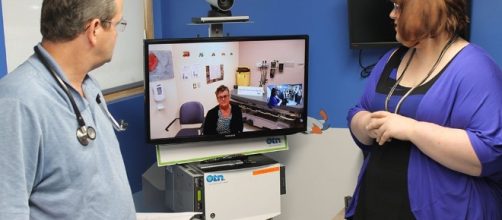As MedCity News notes, Texas Gov. Gregg Abbott has signed a bill into law that will eliminate a requirement that a doctor establish a face to face relationship with a patient before using Telemedicine technology to diagnose and treat him or her. Texas was the last state in the union to have such restrictions. The law resolves issues that telemedicine companies have with the Texas Medical Board which sought to restrict access to the technology.
What is telemedicine?
Telemedicine deploys an array of technologies that allow doctors to consult with patients, diagnose illnesses, and sometimes prescribe treatment over vast distances.
One simple example of telemedicine would include a teleconference between a doctor and patient over a Skype connection. Doctors can also consult with one another over the same connection, as when a specialist has to be called in.
Increasingly, implanted and swallowed monitoring devices will be able to provide 24/7 coverage of a patient’s vitals while at home. Such an array of devices would be hooked into a computer network at a hospital or doctor’s practice, with a warning function in case of a medical emergency, such as an impending heart attack or stroke. Eventually, these devices will be able to provide early diagnosis of diseases such as cancer, allowing for treatment before such ailments become more serious.
One feature will even allow for “smart pill bottles” that will alert a health care provider if a patient is not taking his or her medication.
Why is the technology important?
Telemedicine will allow for the 24/7 monitoring of patients’ health, allowing health care providers to intervene early if something is about to go wrong.
The technology will also provide data on how medications are affecting people who are taking it and will allow doctors to change prescriptions on the fly.
Telemedicine will also address a chronic problem of a lack of physicians in rural and other underserved areas. With the technology, a nurse practitioner or physician’s assistant will be able to consult with a doctor who may be hundreds of miles away for diagnosis of diseases and what the proper treatment will be.
Telemedicine will also make specialists more available for such areas where doctors are scarce. Sick people in remote areas will not have to travel a long distance to get treatment in many cases.
What happens in Texas now?
Telemedicine companies such as TeleDoc and Doctor on Demand will be able to start providing services in the Lone Star State unimpeded by onerous regulations. Texas ranks 46 out of 50 in the number of physicians per capita. 35 of Texas’ counties do not have a primary care doctor. Telemedicine will start to address those problems now that the technology is not restricted.


